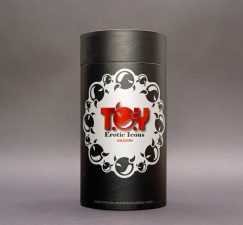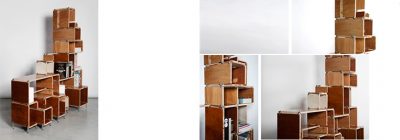What Adital Ela has to say about making light from wind, and other sustainable design ventures.
We recently learned about Israeli sustainable designer Adital Ela’s work when we heard about her KickStart project to get WindyLights – a design that generates light from wind – on the ground. Since then, we’ve learned that Ela is a key figure in the sustainable design world. She is the founder of S-Sense Design, a design firm that “aspires to design products and systems that embody the outlook of sustainable design and support the promotion of sustainable lifestyles and cultures.” She is also one of the co-founders of the social-environmental design study track at the Holon Institute of Technology (HIT). Intrigued, we had a little chat with Ela to learn more about her work.
A couple weeks ago we wrote about your sustainable lighting design project, WindyLights. Could you tell us a little bit about how the idea for that project first evolved and your vision for the project in the future?
We all know that wind energy can be captured by huge turbines in the middle of the sea or on the top of mountains. But what about the soft gusts of with that are prevalent in the urban environment where people actually ARE? I wanted to explore how can design thinking support a vision in which objects become a direct link between renewable resources and everyday human needs. This is how the project found its way to the idea of small repetitive modules that work on soft winds.
WindyLight wants to become a “high value, fair profit” venture that brings wind operated light solutions to city centers and to remote areas. We are working to create also customized solutions for communities that are not connected to the grid.
How do you usually begin going about innovating and designing a product?
I dedicate my professional life to explore ways in which sustainability designers can envision, illustrate and enable the realization of new and inviting life habits that can thoroughly reform the encounter between man, object and environment. In my work I aspire to create fresh and creative alternatives to our prevalent lifestyle which offer not only social and environmental benefits but also illustrate appealing, sensual, experiential and inspirational products, services and systems.
With this motivation and from these glasses I look at the world and explore until I find a starting point for a design process that I feel can lead me to supporting the vision of design that comes from a deep sense of participation.
You have been involved in the sustainable design sector in Israel for many years. Do you think the field is developing, changing? Do you see more of a shift towards sustainable design in Israel?
I would say yes. I feel that the community that is dedicated to the idea of sustainability is growing all the time. My ideas that were thought to be very radical seven years ago are accepted by more and more people. I feel that we still have a huge challenge in exposing more designers to the visions and tools of design for sustainability in a much earlier stage of their studies. I also feel that the business sector is still very slow in its adaptation to these concepts and that very few brave decisions are being made.
 Do you think that sustainable design is a growing field in the Middle East at large?
Do you think that sustainable design is a growing field in the Middle East at large?
To be honest, I am not sure about this. A few months ago I tried to locate partners for a local sustainability design network as part of the global desis- design for social innovation (www.desis-network.org) and had a very hard time to locate collaborators..
You were also one of the founders of the social-environmental design study track at the Holon Institute of Technology (HIT). What is the demand for that track, and are there other educational institutions in Israel that offer similar programs?
The study track is a two years program within the four years of product design studies. It aims to expose the students to the most updated visions, tools and study cases in the field of design for sustainability. Students develop different projects around the theme of design for sustainability and for sustainable life habits and we also focus on more social concepts such as design for all and design for special needs. It is a very unique program here in Israel and also rather unique on a global level.
What are some of the courses offered through the HIT social-environmental design study track?
Design for sustainability, design that supports sustainable life habits, edible and biodegradable, design for all, design for special needs. Students also develop their own final projects in the field.
: :Adital Ela
Read more about Adital Ela:
Sustainable Design Seminar Starting at the Israeli Design Center Next Week
Help KickStart a Sustainable Lighting Project




